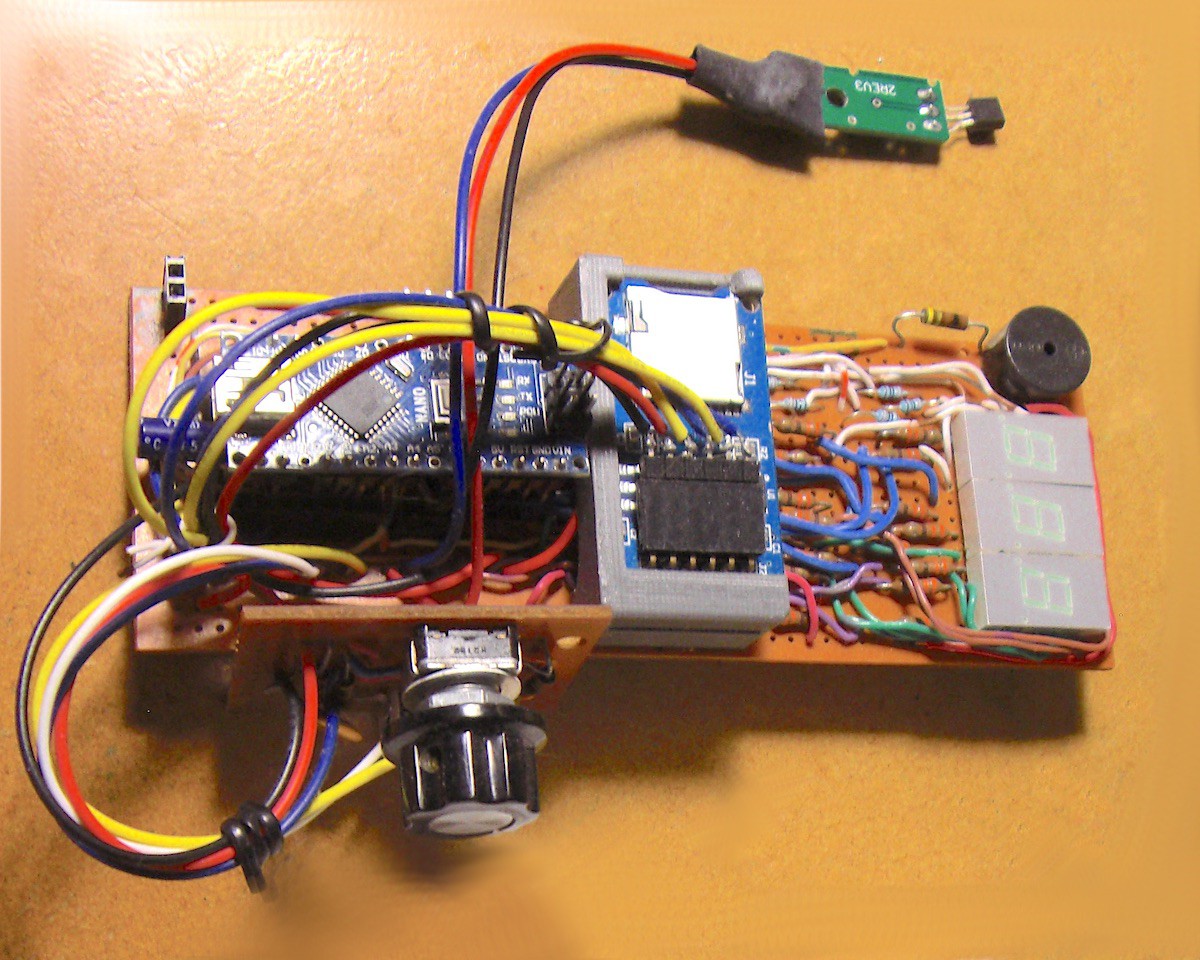The catalyst for this was some almost 40year old seven-segment displays sitting in my parts cabinet. I swear these have almost certainly been there since the early/mid 1980s, and I've not done anything permanent with them. They'd get used for a few minutes or days for something, then tossed back into the cabinet when the exploration was finished.
I started with an Arduino Nano (5V) as I had a handful of them around, and the old LSI stuff I had around was 5v compatible.
The first effort was to find some suitable shift-register logic, and work out a segment illumination pattern for the characters I wanted. I had some 'HC164 (non-latching) devices which were just as old as the 7seg LEDs so i used those. I'd have probably used the '595 latching version had I any around, but in the end I was happy with the non-latching as my user interface isn't very highly dynamic and the display driving happens too fast to see any artifacts anyway, and it simplifies the code & interconnect a tiny bit.
With that quickly working on a breadboard, I started a perf board prototype with three digits, and three '164s.
I came up with a simpler state-machine based firmware structure, and a handful of abbreviations for a 7-seg user interface. I started with the idea of three buttons up, down, and enter for navigation. As I was beginning to wire that up, however, I came across a spare rotary encoder I'd bought when I replaced a broken one in our microwave oven. It's a simple rotary without detents and with a push-in normally-open button incorporated. It too was a surplus part with nothing slated for its use, so I opted for that instead.
All that together and I had a UI. It wasn't hard to incorporate a temperature sensor and an SDRAM interface daughter card and I had these little monster which was able to do what I wanted. Doggler was born.

 RossGK Tangibles
RossGK Tangibles
Discussions
Become a Hackaday.io Member
Create an account to leave a comment. Already have an account? Log In.